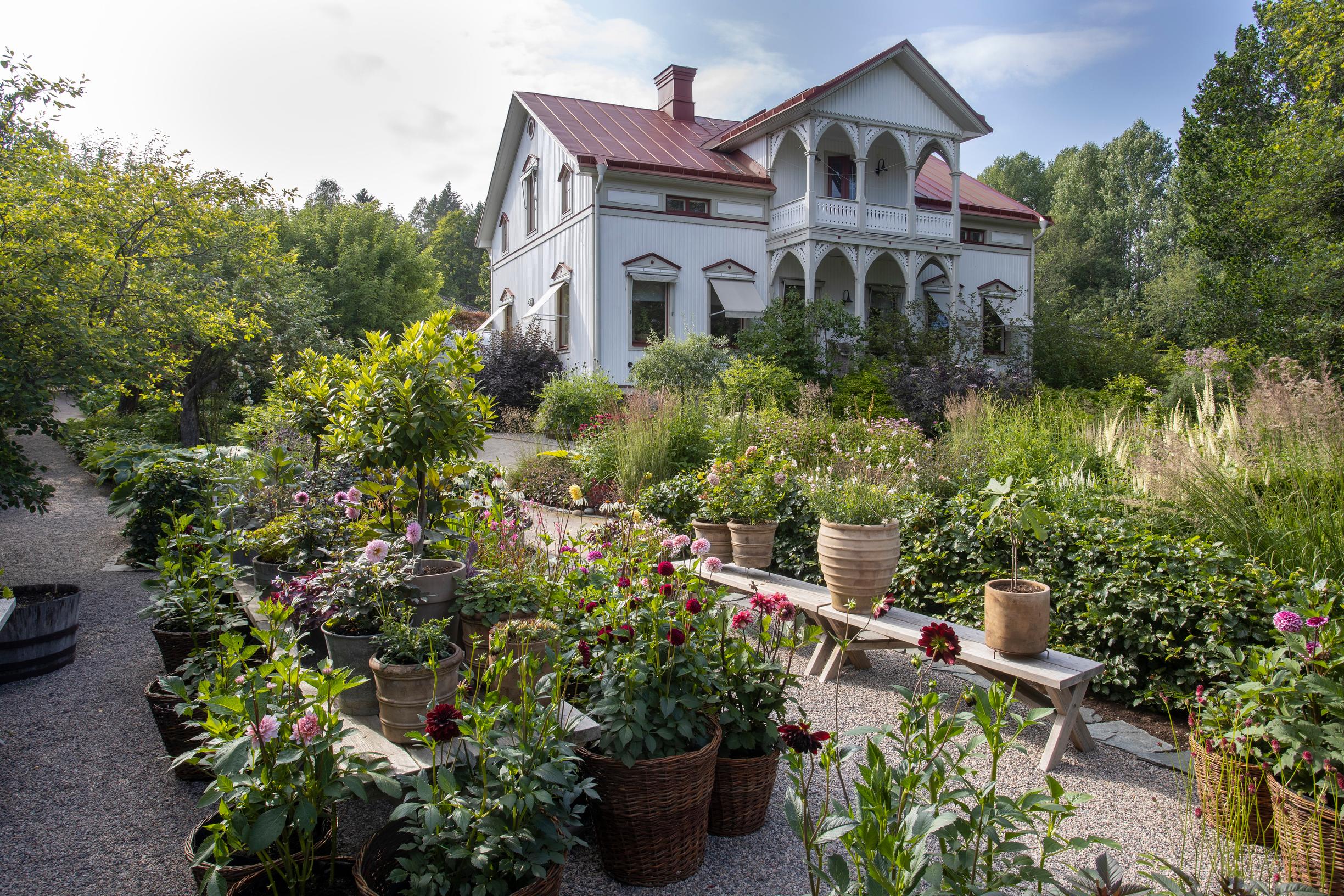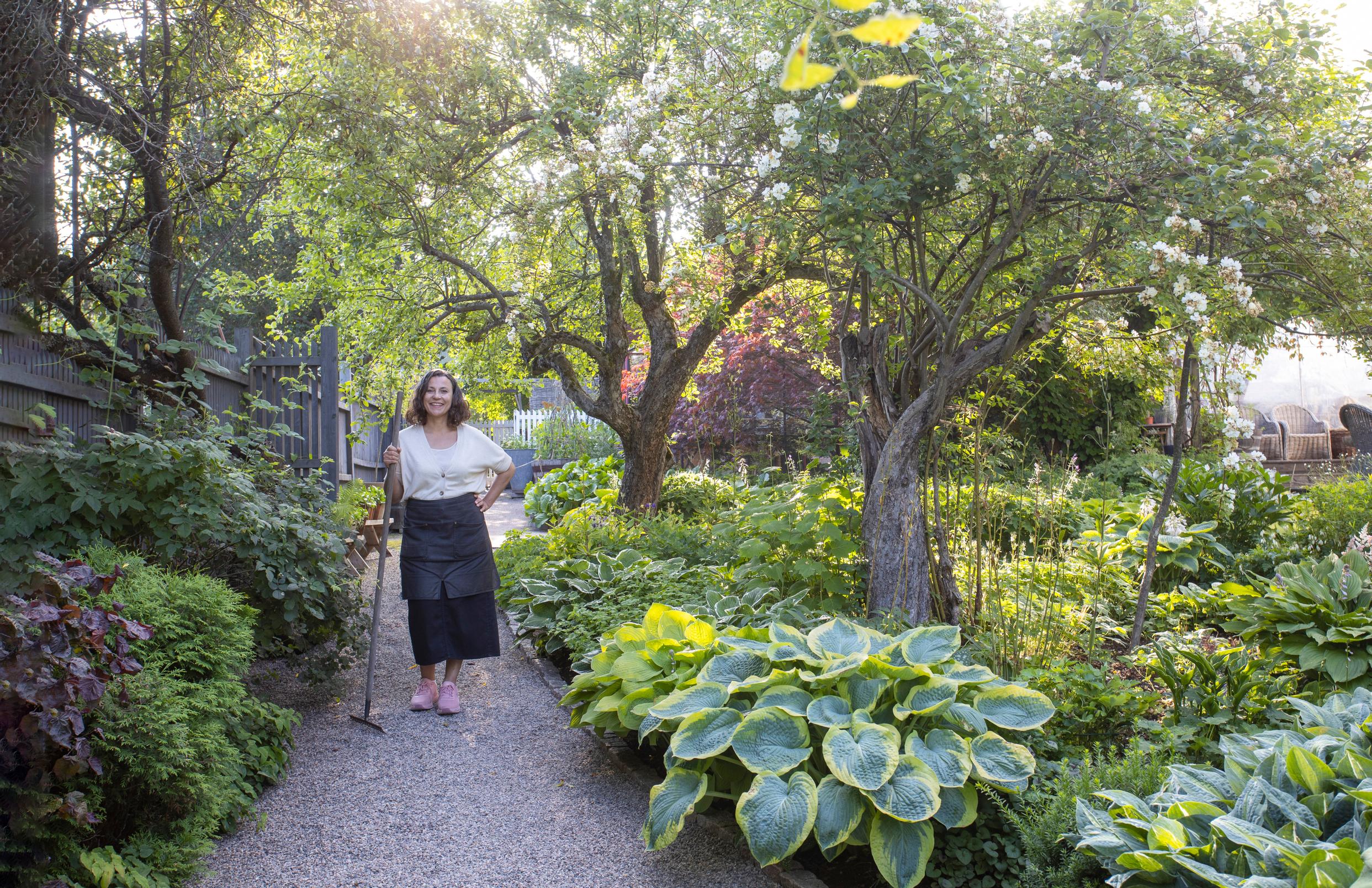
Charlotte ditched her lawn and created a garden so spectacular it became a visitor attraction—and her new job
Charlotte Andersson turned her children’s play area into a lush haven of joy and creativity. Alongside dependable, winter-hardy perennials, Katrinelund’s garden includes Himalayan mayapple, Japanese maple, and other ‘princess plants,’ plus perennial container arrangements that further elevate its look. At the end of the article, Charlotte shares her tips for creating a thriving container garden.
Charlotte Andersson from Sundsvall, Sweden, had dreamed of working with plants since her school days—perhaps as a florist or garden designer. However, she ended up studying to become a primary school teacher because it felt like a more practical path. Still, her youthful dream kept simmering in the back of her mind. Over the years, Charlotte met her husband Ulf. About twenty years ago, after they moved into an old wooden villa, she gradually began turning the grassy lot into a garden. For a long time, though, most of it stayed a play area for their two children.
“I started near the house and tackled small areas at a time. I didn’t have a formal plan, but I knew immediately what atmosphere I wanted. I want my garden to be a private, welcoming oasis for rest, delight, and creativity. To me, the right feeling means more than specific plants,” Charlotte says.
Perennials form the garden’s backbone. Charlotte chose many relatively tall varieties, such as ornamental grasses, Joe Pye weed, lavender mist meadow rue, burnet, and foxgloves. Alongside existing old trees, she planted smaller ornamental trees and shrubs.
In the central part of the garden, neatly trimmed hedges of European beech and yew frame the perennial beds. There’s no lawn at all; instead, gravel paths wind through softly curved planting areas.
What: Charlotte’s garden, Katrinelunds Trädgård, in Sundsvall
Hardiness zone: IV (equivalent to zone II in Finland)
Size: 1,900 m²
Soil: Good, established garden soil enriched with compost and horse manure
Special note: The garden was named Sweden’s most beautiful in 2017
Instagram: @charlottegardenflow
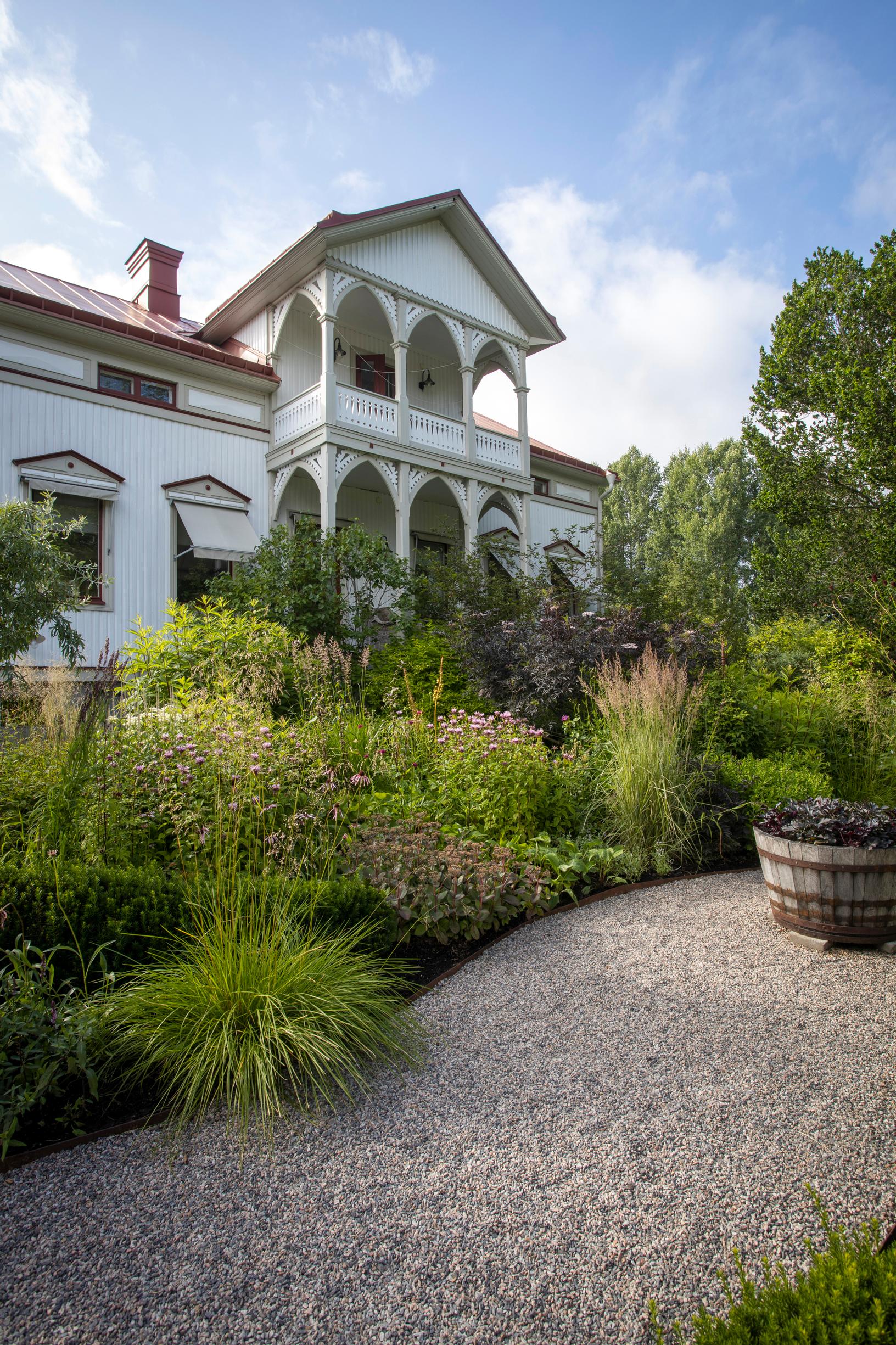
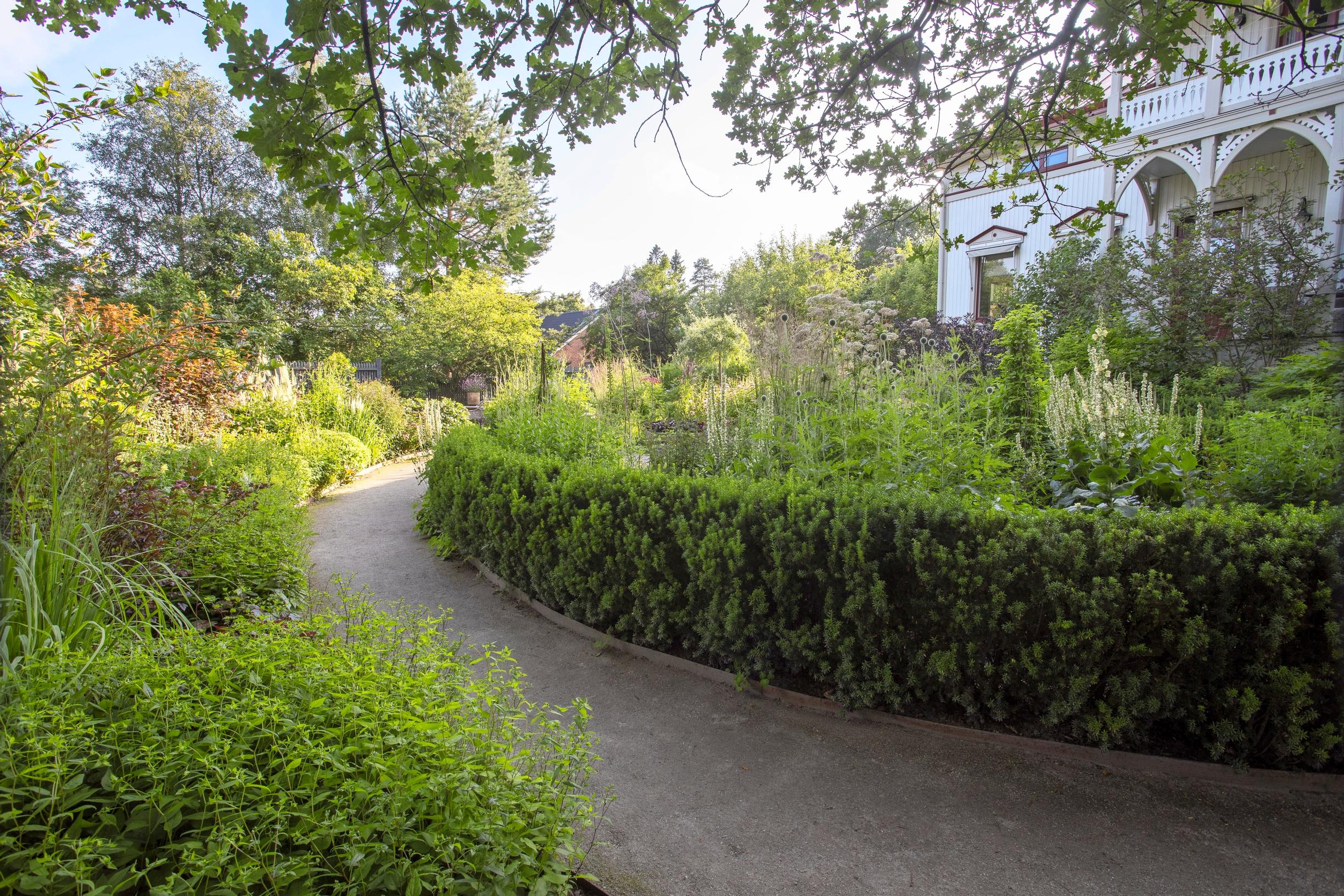
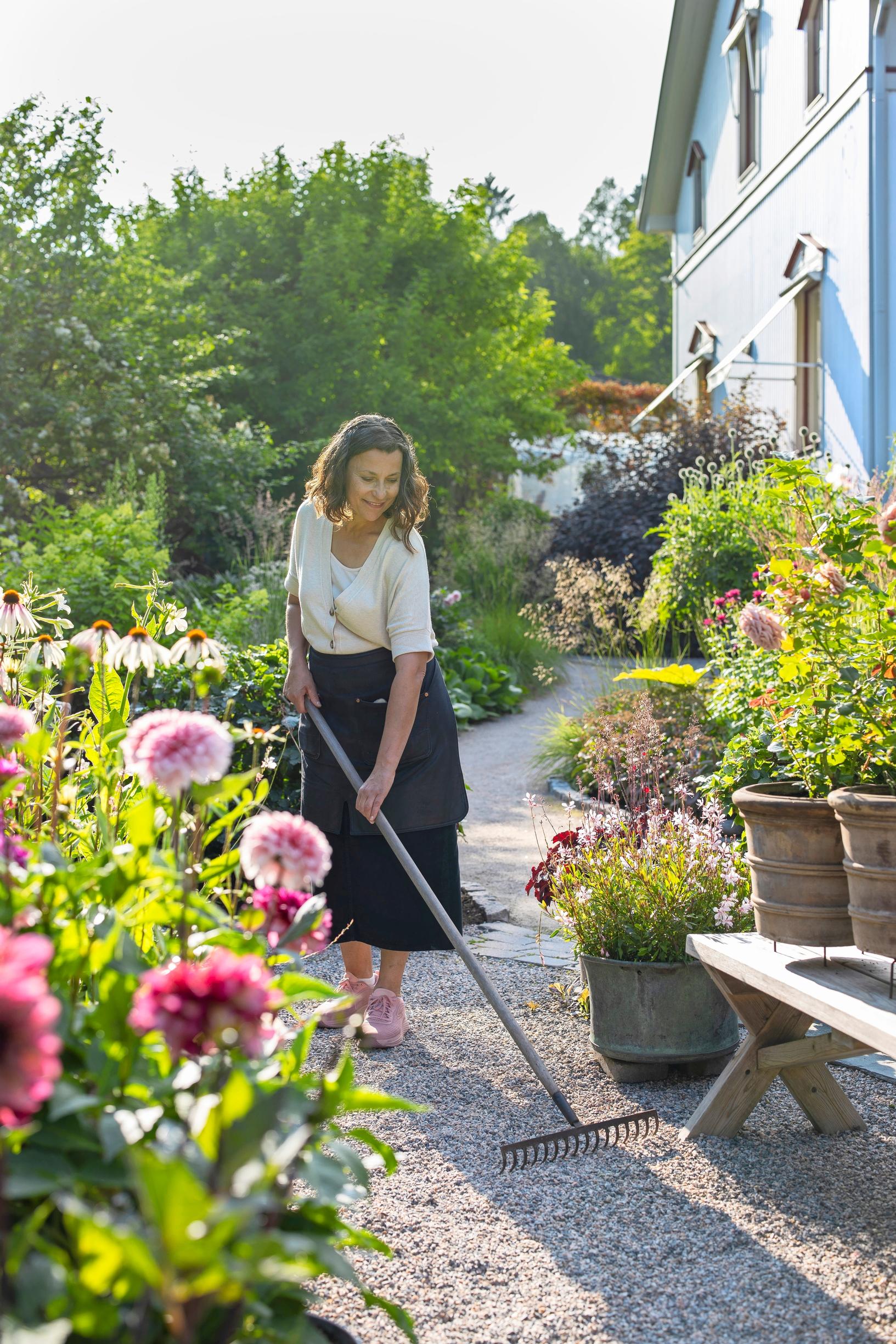
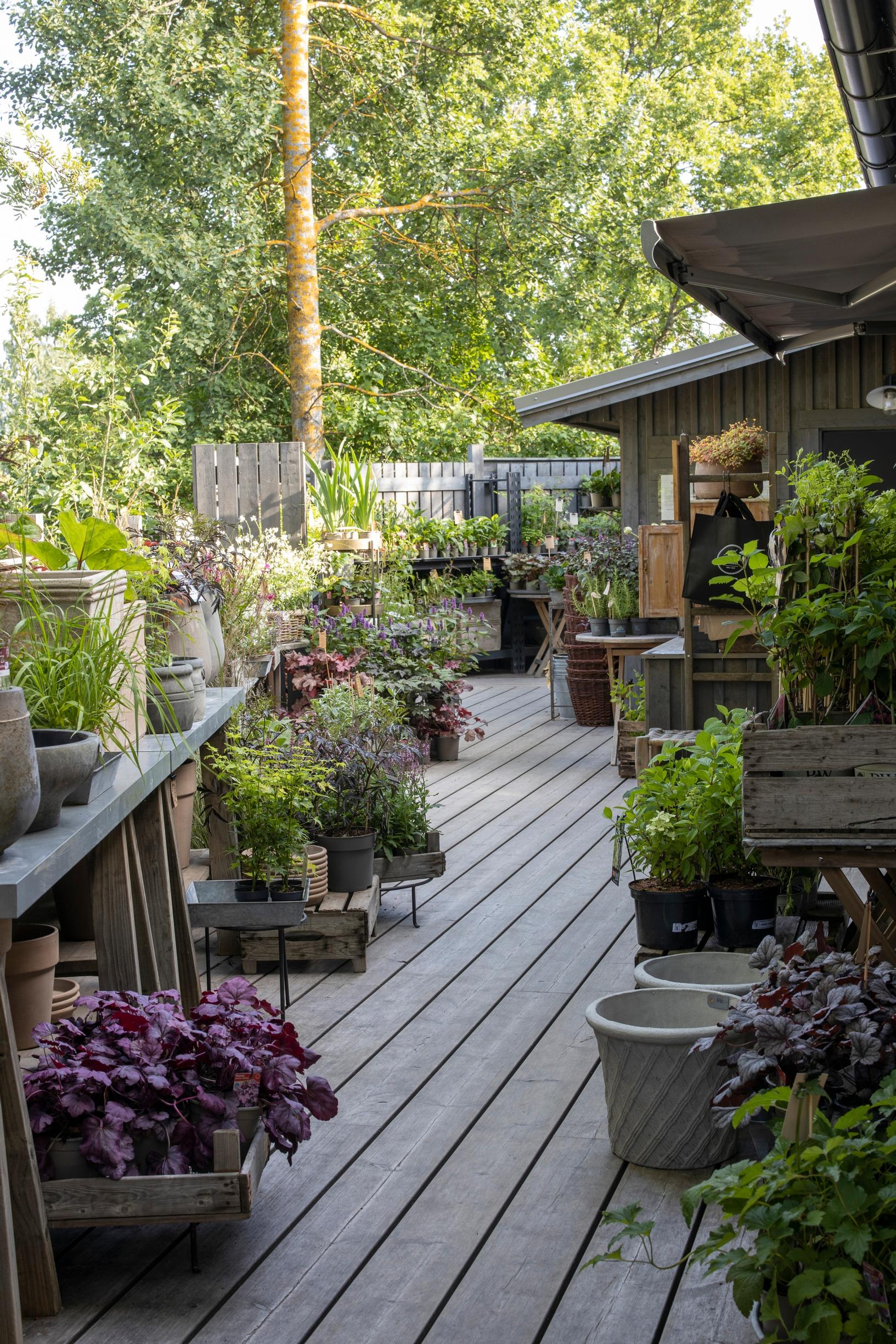
The idea behind the plant choices is to keep proportions balanced, soften the differences in elevation, and help the house blend more smoothly into the garden, as it sits at the property’s highest point and strongly dominates the view. Most of the plants are intentionally everyday perennials.
“The older I get, the more I rely on basic plants. They really pull their weight. Of course, at first I was enchanted by rare varieties and collected them, but that’s not how you truly build a garden—you just end up with a plant collection. Especially here in the north, hardy species are the heart of a garden.”
In Charlotte’s view, another typical beginner pitfall is focusing too heavily on spring and early-summer plants. She fell into that mistake herself at first: after a long winter, she was eager to buy every plant in bloom and to plant kilos of tulip bulbs in the fall. But spring weather in Sundsvall can be unpredictable, so despite all that effort, the garden might not look its best. In Charlotte’s experience, late-summer plants are more rewarding because you can enjoy them at least until the first snow—and many last even longer.
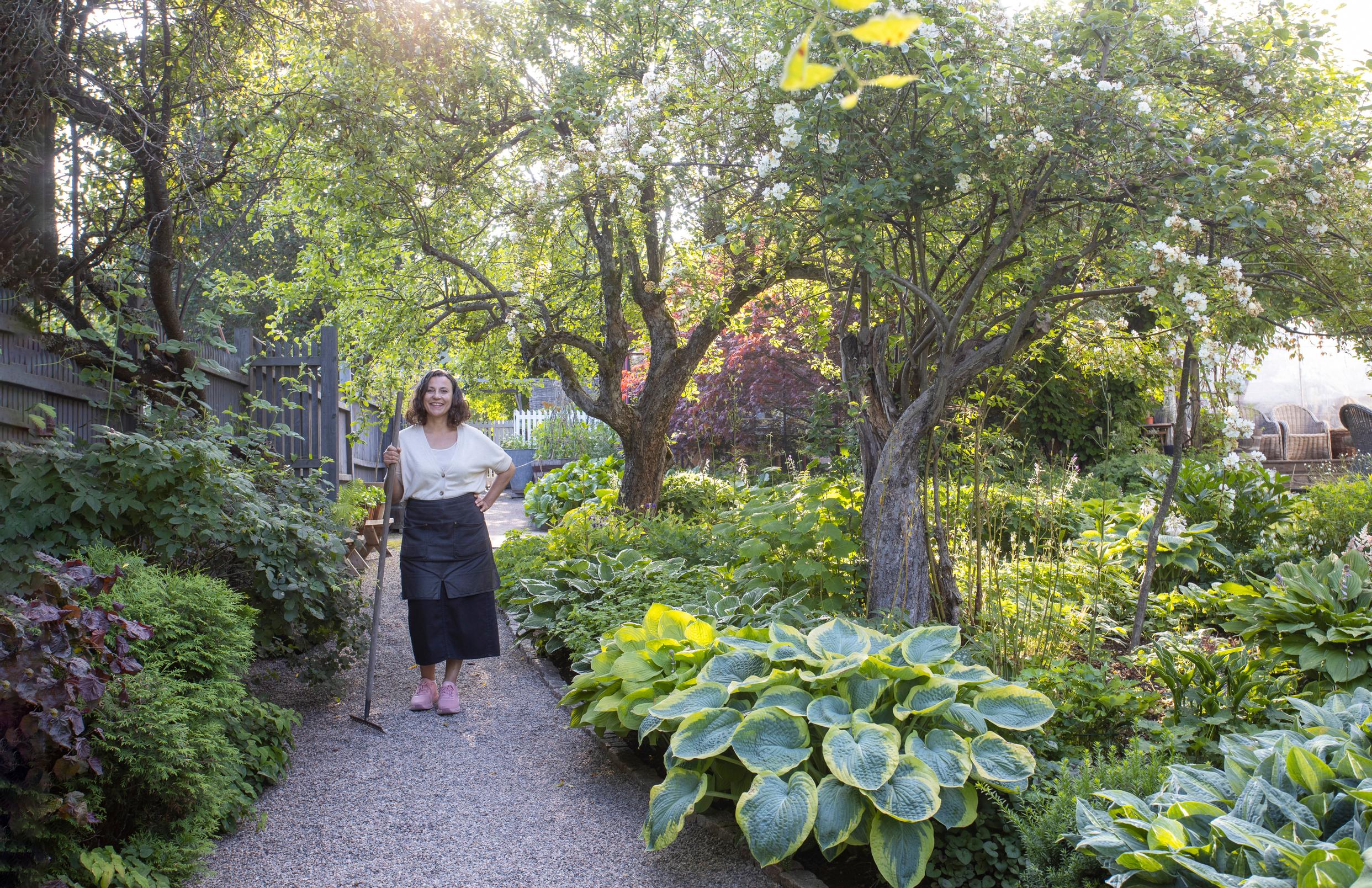
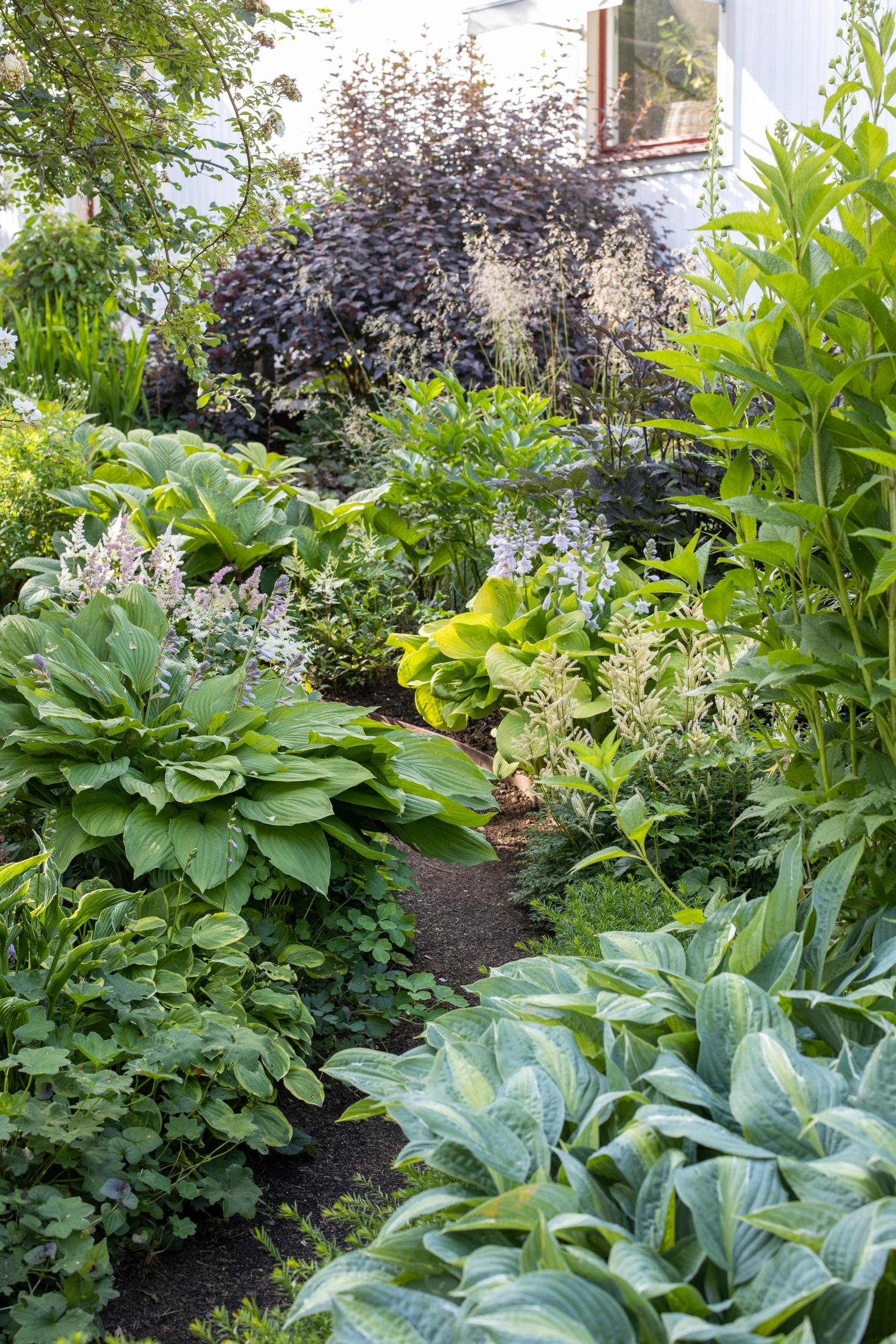
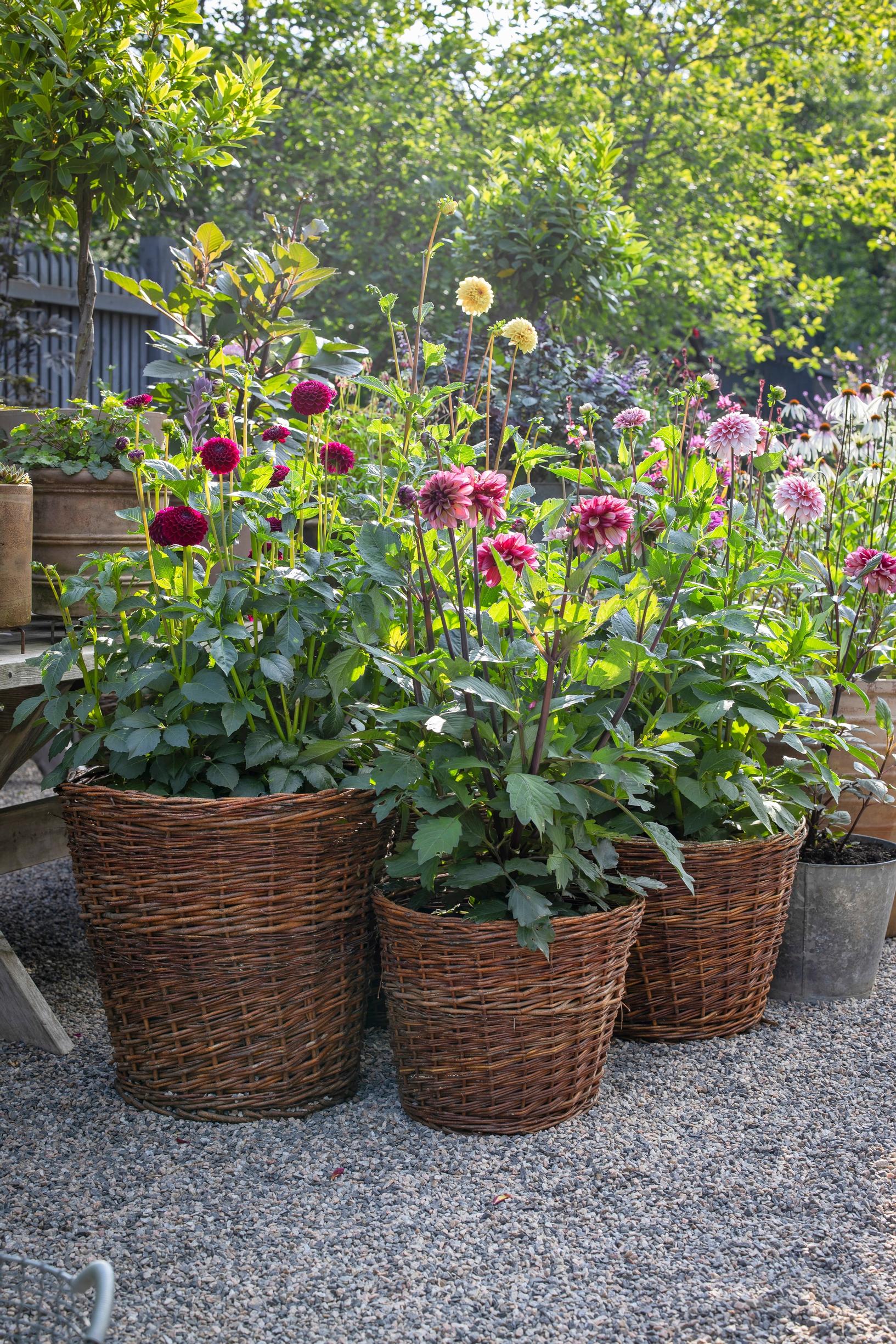
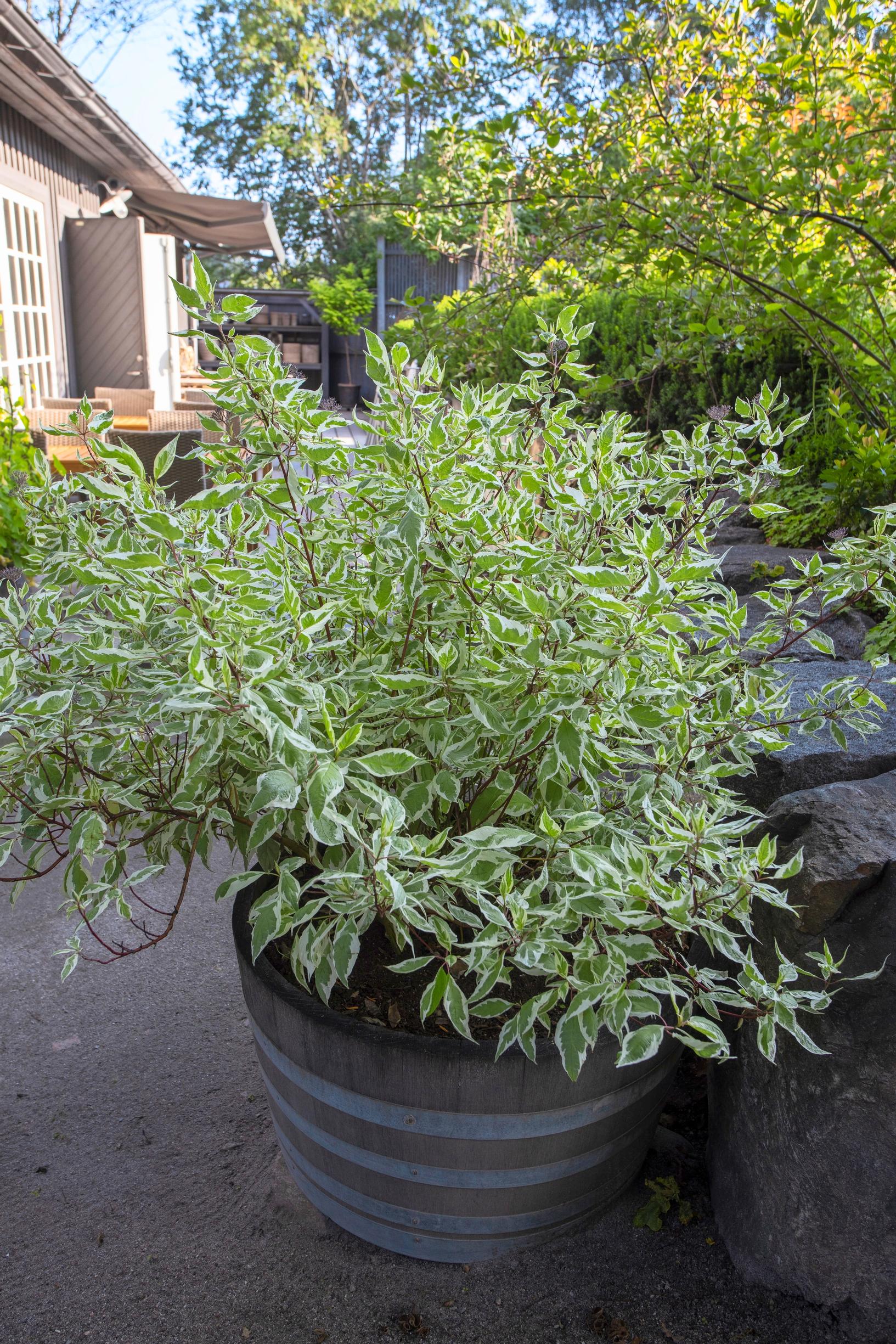
Nowadays, the garden has grown so lush that the main work is refining rather than building from scratch. Besides her steadfast favorites, Charlotte likes to add a few fancier “princess plants,” such as the white Himalayan lily or a Japanese maple with dramatic foliage, for extra flair. She’s also looking into swapping some existing plants for more pollinator-friendly native species to benefit bees and other helpful insects.
Charlotte relies on plenty of container plantings to enhance the overall impact. In large pots, plants stand out in ways they wouldn’t in the ground. She fills big wooden tubs, baskets, and terracotta pots with dahlias, hybrid roses, coral bells, and other perennials that do well in containers. She rarely uses traditional annuals because she dislikes the idea of single-season throwaway plants. She gardens organically and believes her plant choices should align with sustainability.
“I prefer plants that are perennial in one way or another. You can overwinter them in pots or propagate them by seeds or root cuttings.”
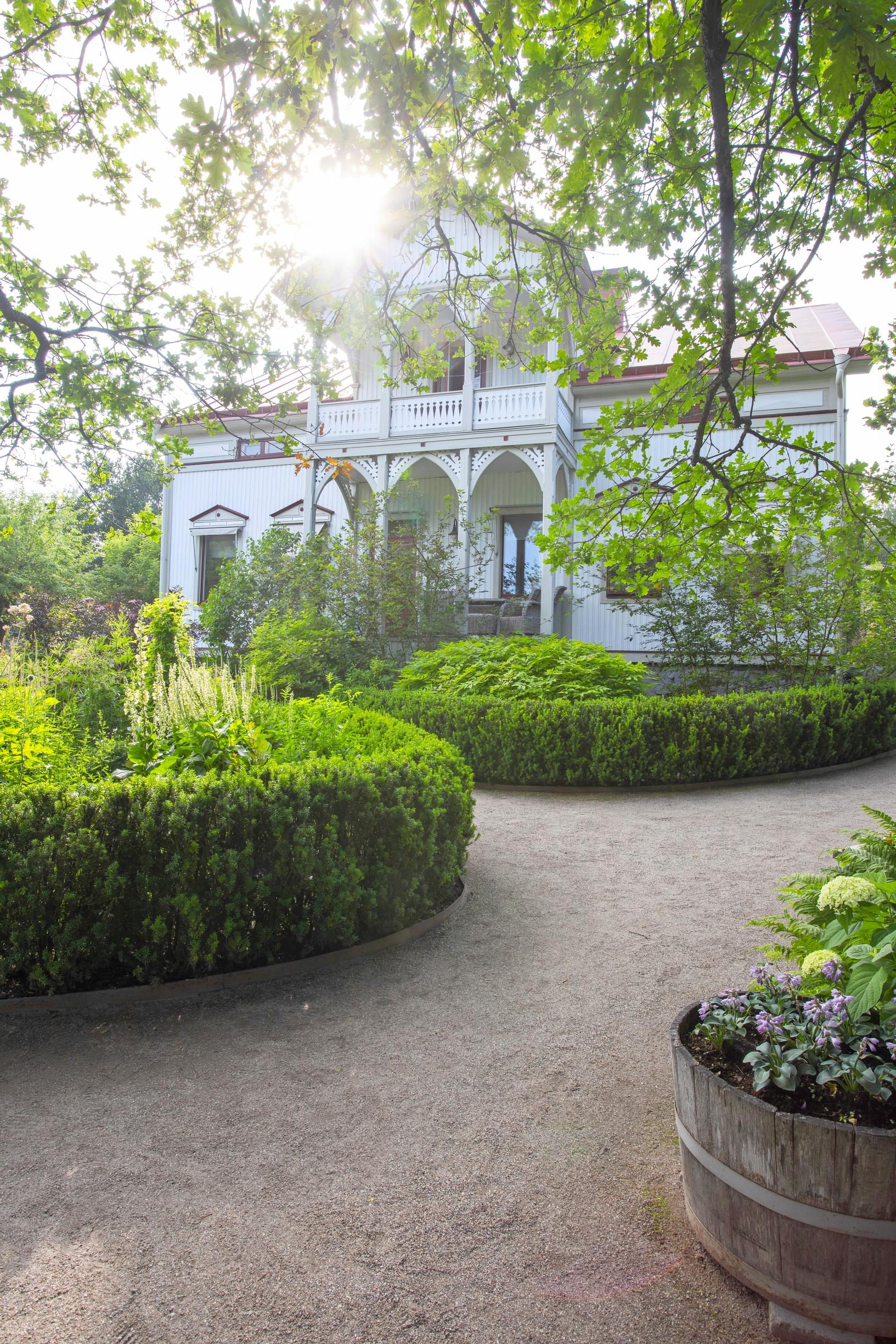
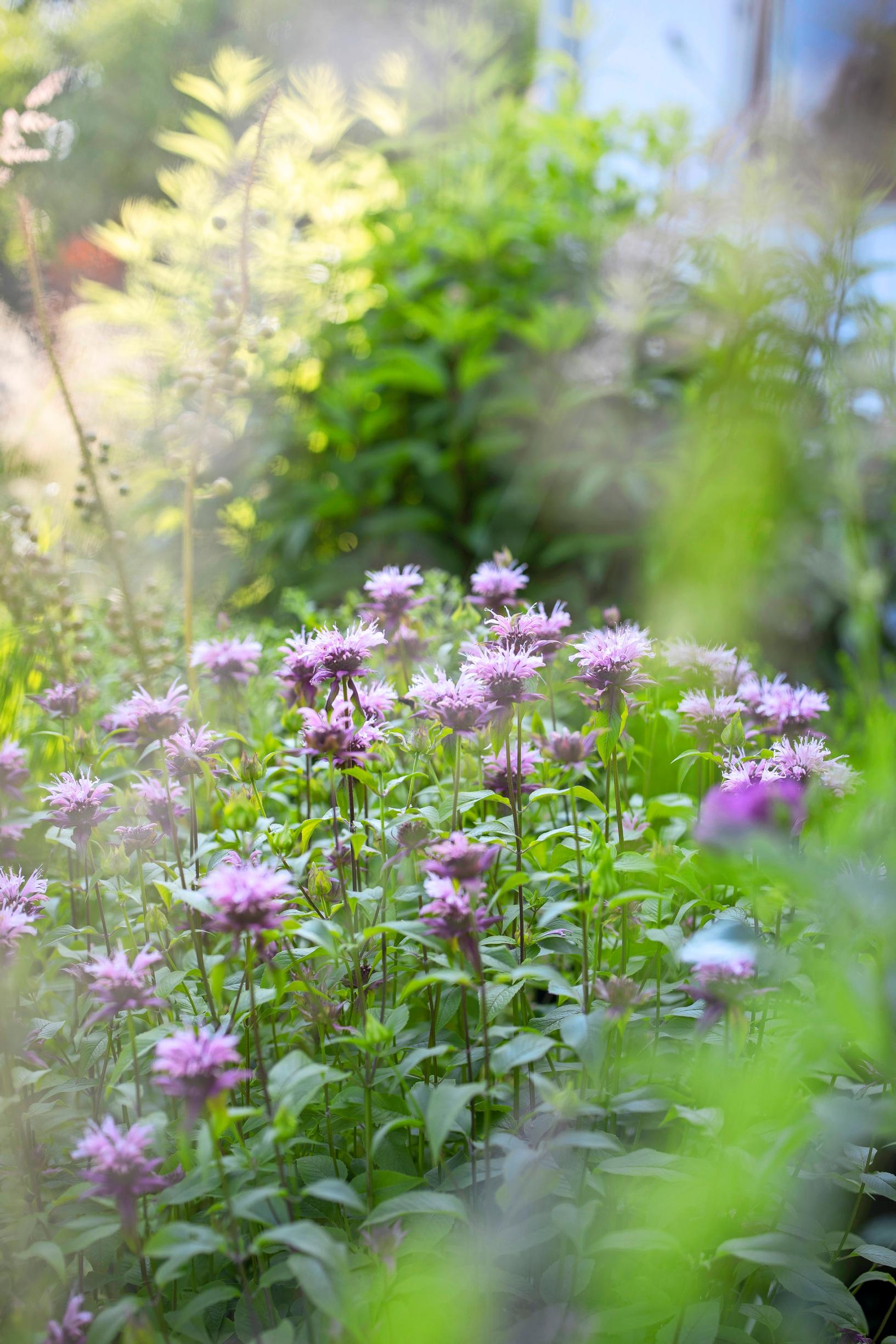
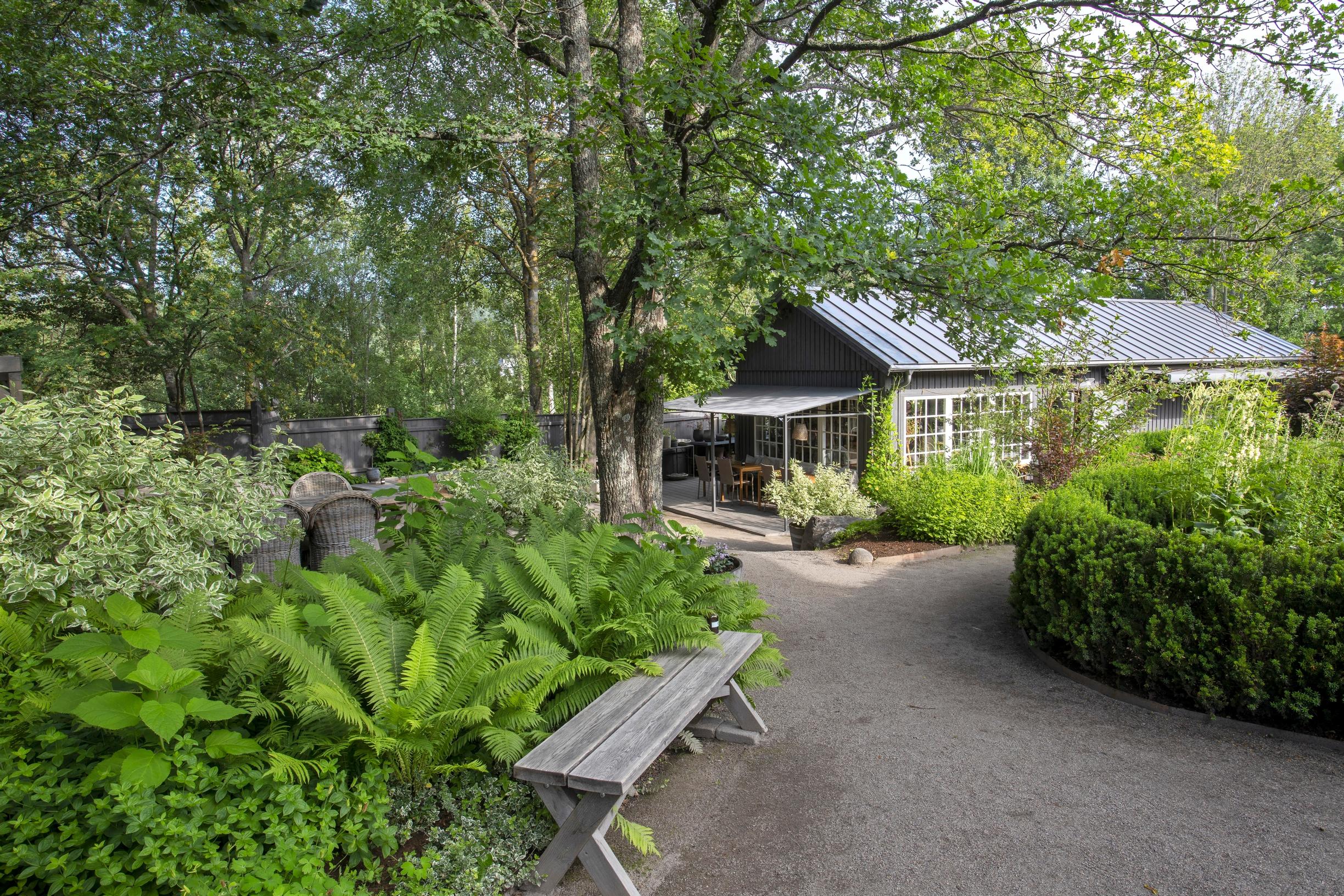
Dreams do sometimes come true, and that’s exactly what happened with Charlotte’s early passion. Since 2019, she has worked from her own garden. Katrinelunds Trädgård charges an admission fee and includes a small garden shop plus a café, where around 90 lunch guests stopped by just today.
Charlotte says her new profession evolved naturally. At first, she occasionally opened the garden to the public for fun, offering coffee on the porch. But eventually, so many people showed up that it caused chaos. She had to either stop hosting open-garden days or find another way.
“Now that I’m in my fifties, I’m finally doing exactly what I’ve always wanted. I love everything related to gardening. I hope my garden sparks ideas and confidence in beginners, too. You only learn how to create and care for a garden by diving in and experimenting.”
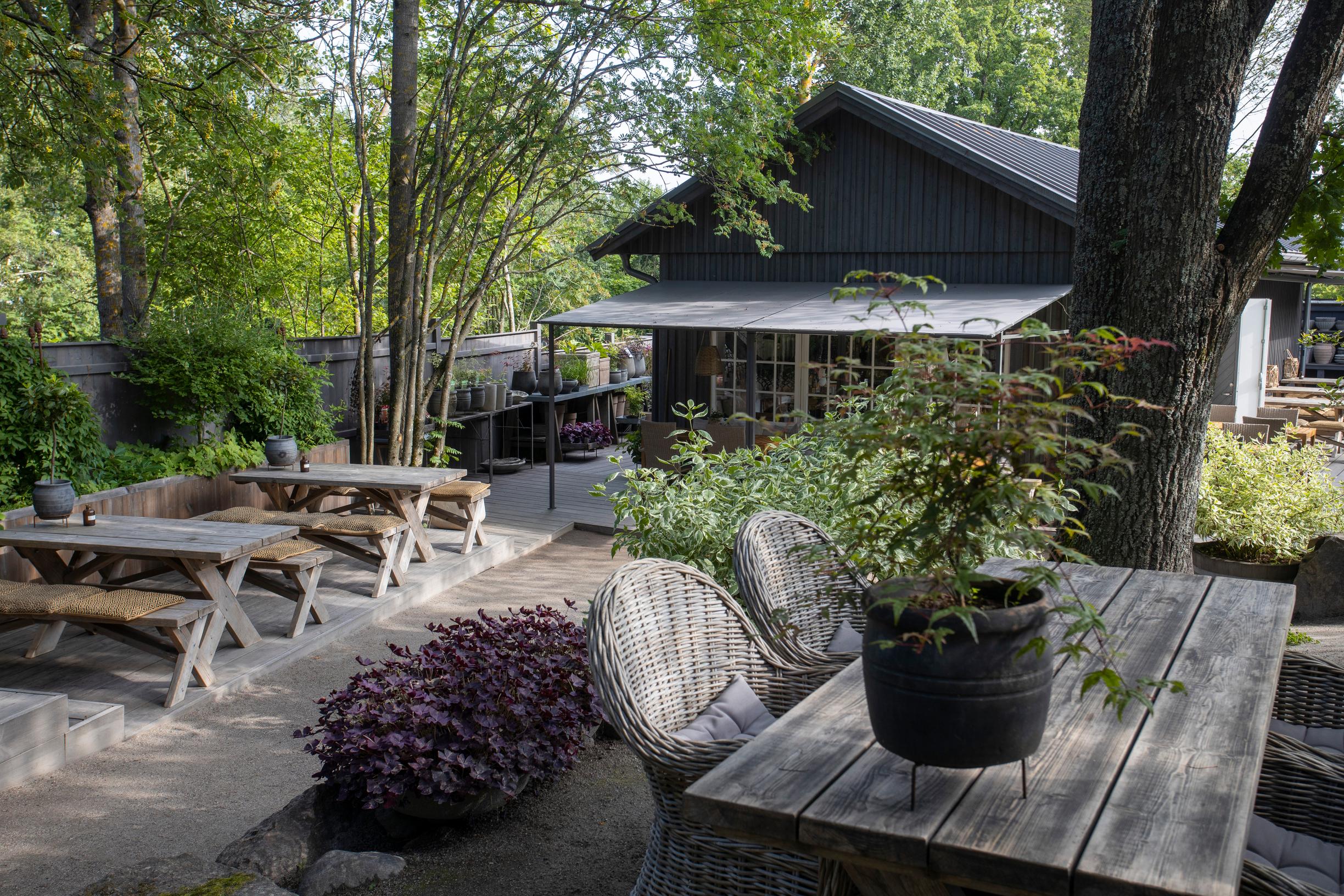
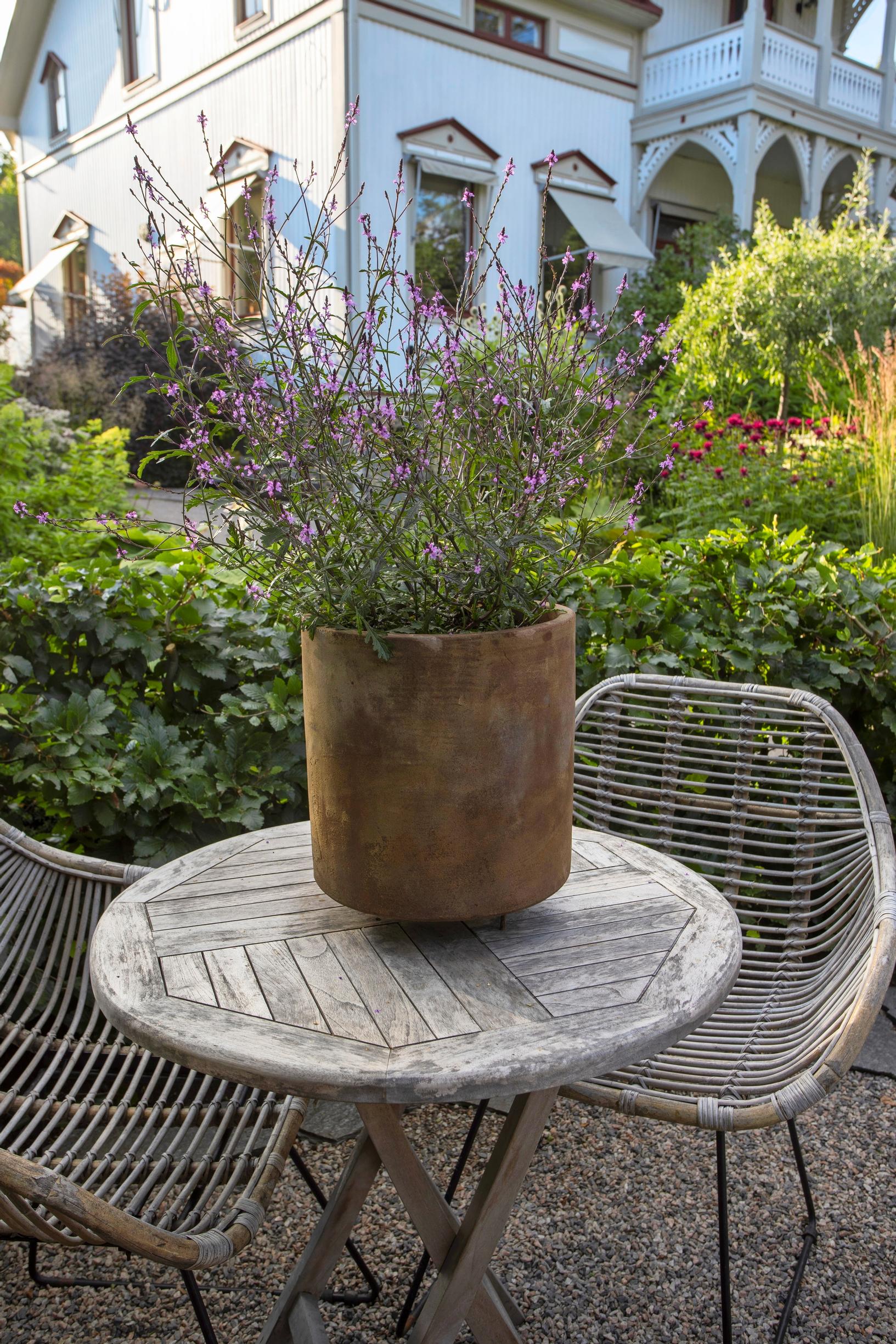
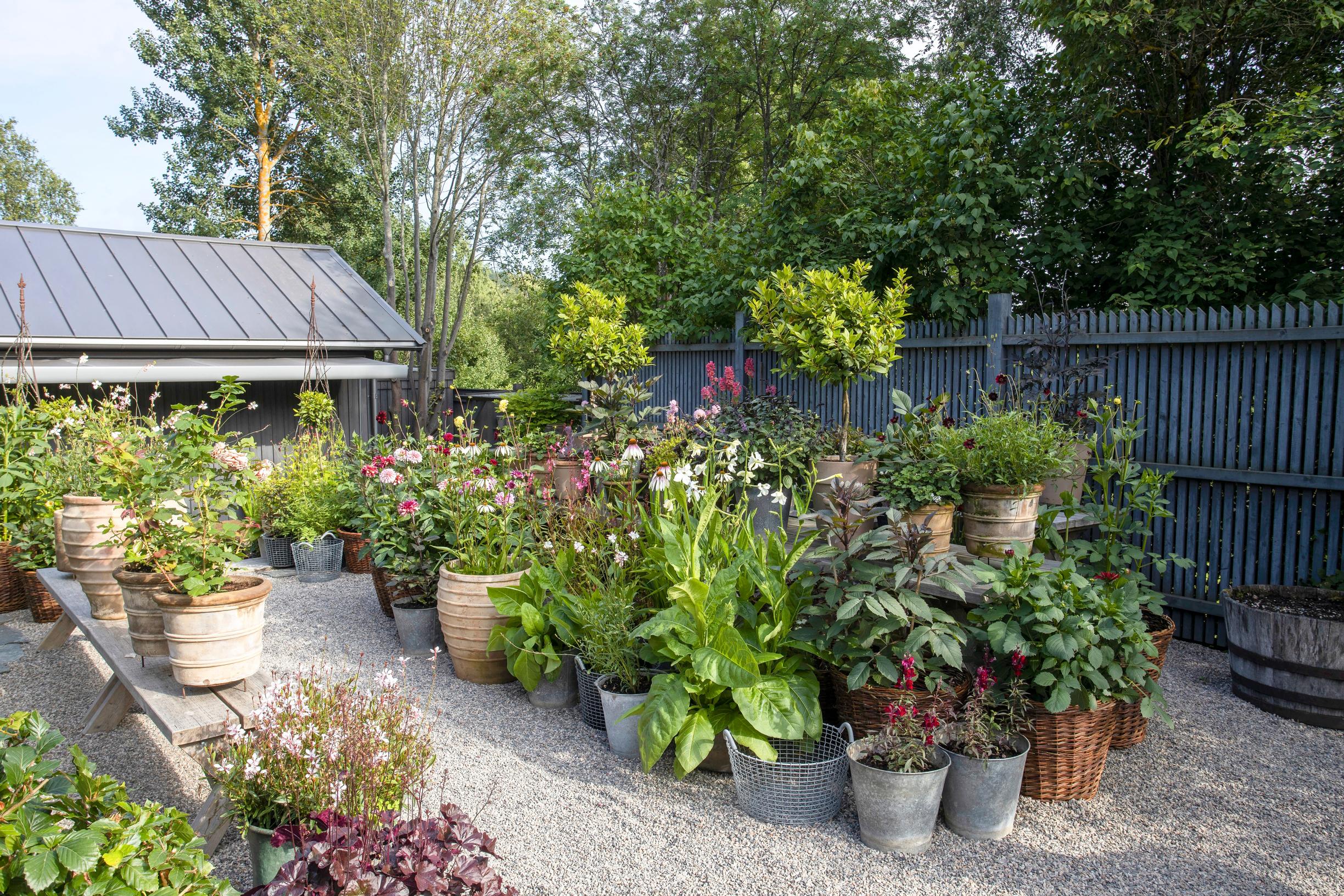
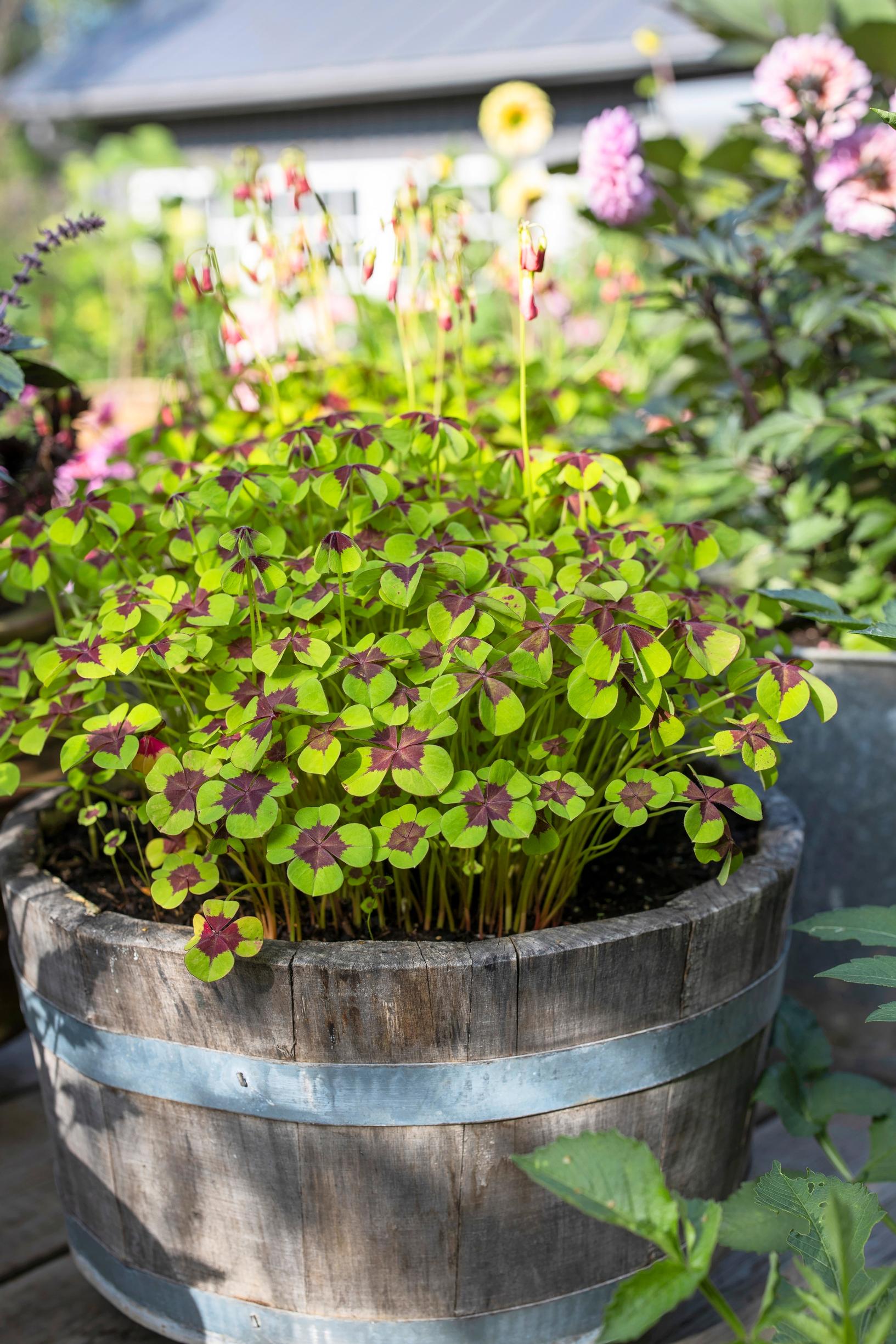
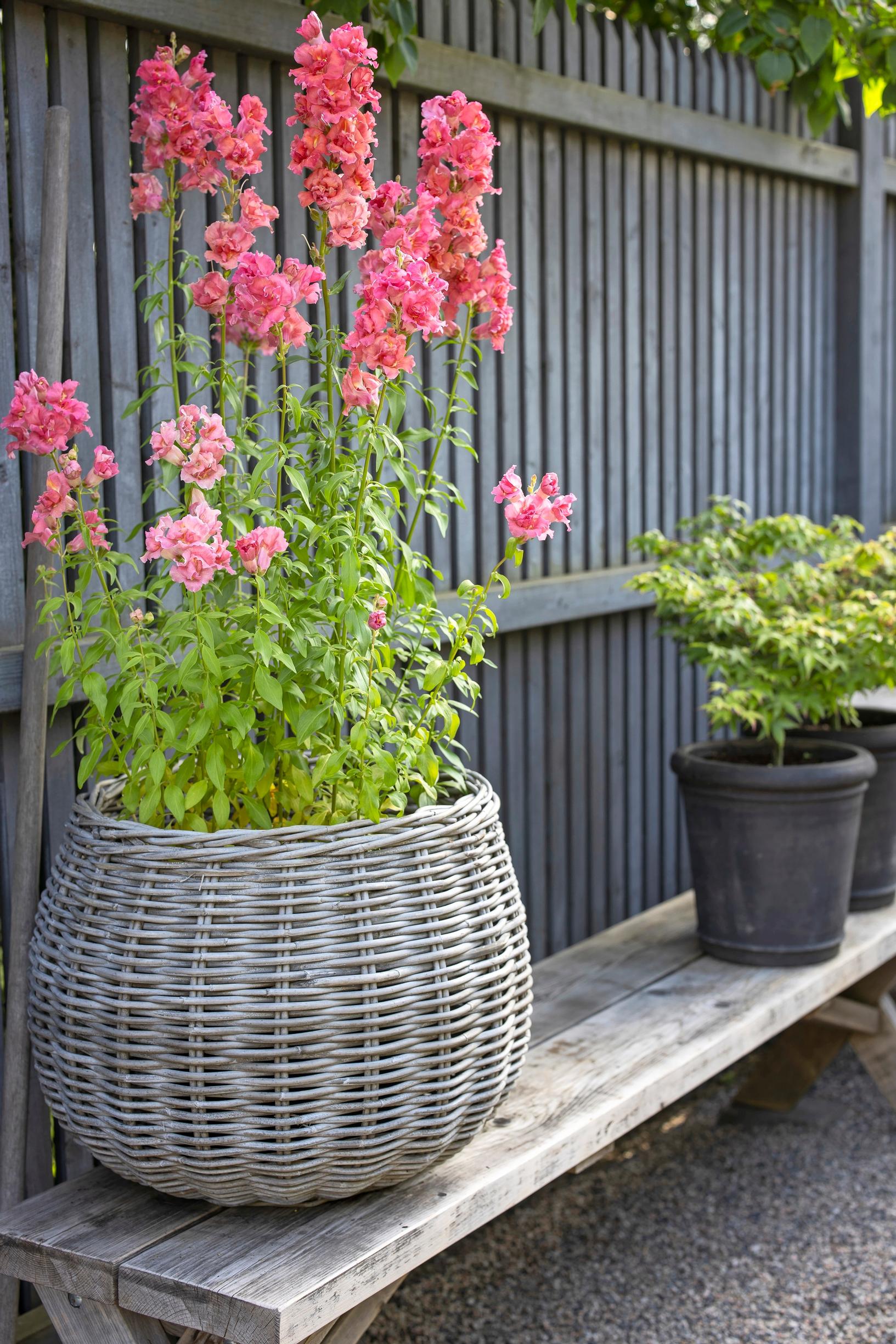
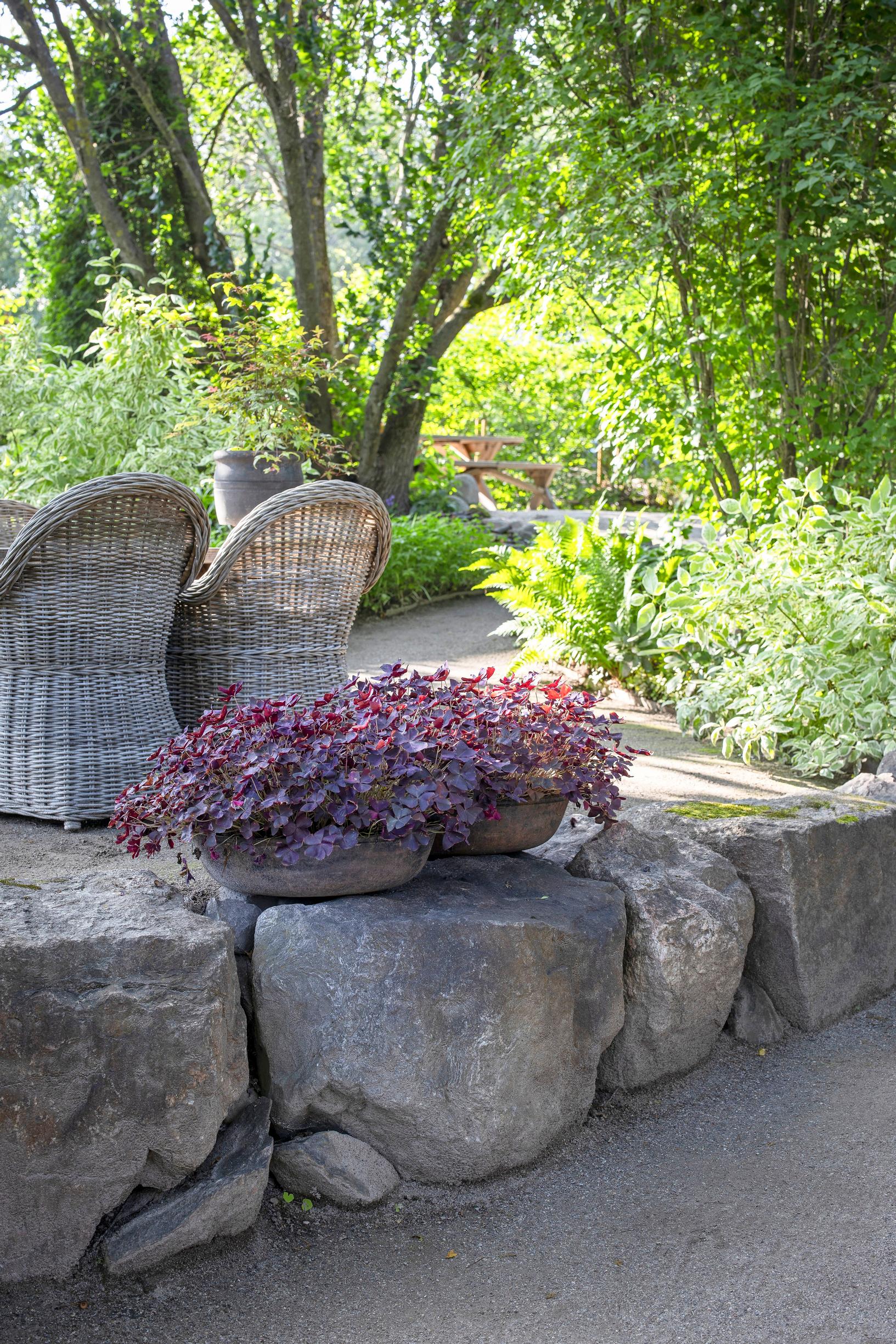
Charlotte’s tips for a container garden
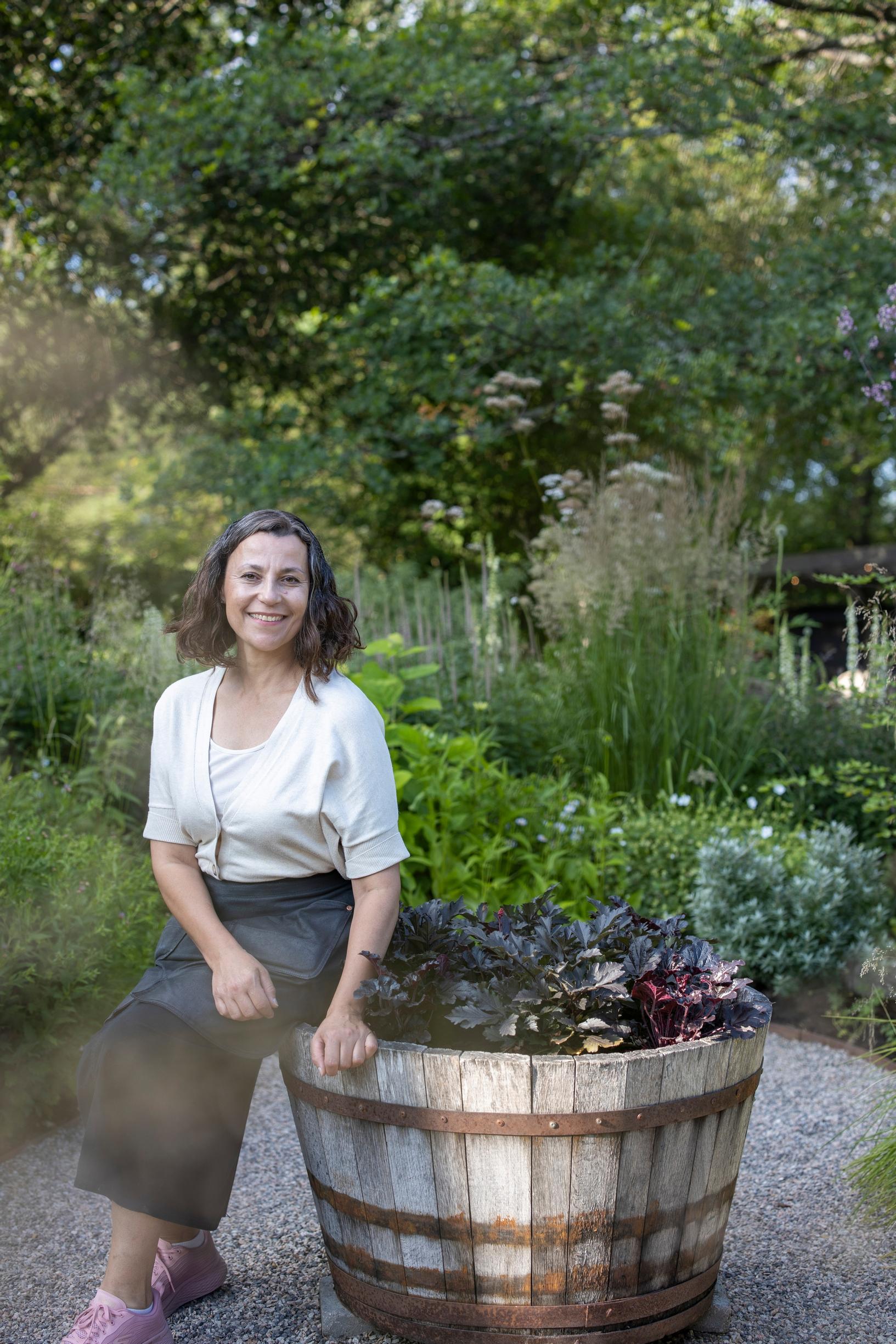
1. Let the plants stand out
Large containers show off a plant’s foliage and form in a striking way. Use them to enliven pathways, seating spots, or entryways, or even place one at the heart of a perennial bed to create a focal point.
2. Seek a wow factor
In recent years, Charlotte has cut back on dahlia tubers in containers since they can carry viruses. She’s exploring other plants that offer the same dramatic look. Hybrid roses have worked well. Tender perennials and small trees also thrive in containers when she overwinters them in a root cellar kept a few degrees above freezing.
3. Group them together
Set up clusters of containers so the plants can accentuate each other’s best features. Keep a sense of unity by choosing pots that complement one another in style or color.
